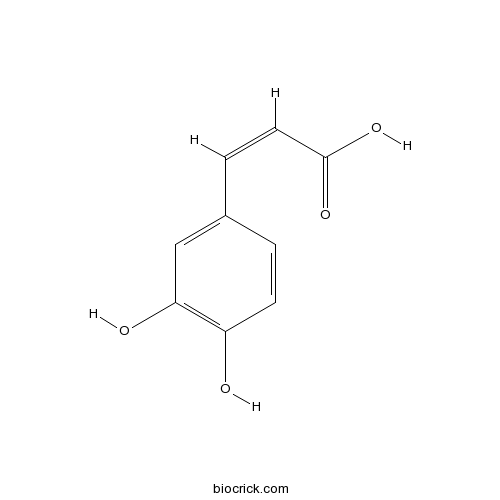Erycibe schmidtii
Erycibe schmidtii
1. The products in our compound library are selected from thousands of unique natural products; 2. It has the characteristics of diverse structure, diverse sources and wide coverage of activities; 3. Provide information on the activity of products from major journals, patents and research reports around the world, providing theoretical direction and research basis for further research and screening; 4. Free combination according to the type, source, target and disease of natural product; 5. The compound powder is placed in a covered tube and then discharged into a 10 x 10 cryostat; 6. Transport in ice pack or dry ice pack. Please store it at -20 °C as soon as possible after receiving the product, and use it as soon as possible after opening.
Natural products/compounds from Erycibe schmidtii
- Cat.No. Product Name CAS Number COA
-
BCN5979
Caffeic acid331-39-5
Instructions

Comparison of active constituents, acute toxicity, anti-nociceptive and anti-inflammatory activities of Porana sinensis Hemsl., Erycibe obtusifolia Benth. and Erycibe schmidtii Craib.[Pubmed: 24055469]
Erycibe obtusifolia and Erycibe schmidtii, which belong to the same genus as Erycibe, are widely used in traditional medicine for the treatment of joint pain and rheumatoid arthritis (RA). Porana sinensis has become a widely used substitute for Erycibe obtusifolia and Erycibe schmidtii as they have declined in the wild. In the present work, the content of the main active components, the acute toxicity, the anti-nociceptive and anti-inflammatory activities of Porana sinensis, Erycibe obtusifolia and Erycibe schmidtii were compared, and the mechanisms of anti-nociceptive and anti-inflammatory activities were discussed.
[Chemical constituents of the stems of Erycibe schmidtii Craib].[Pubmed: 11038888]
Seven compounds were isolated from the stems of Erycibe schmidtii for the first time. They were identified as hexadecanoic acid, beta-sitosterol, scopoletin, chlorogenic acid, daucosterel, scopolin and an alkaloid-baogongteng C.


